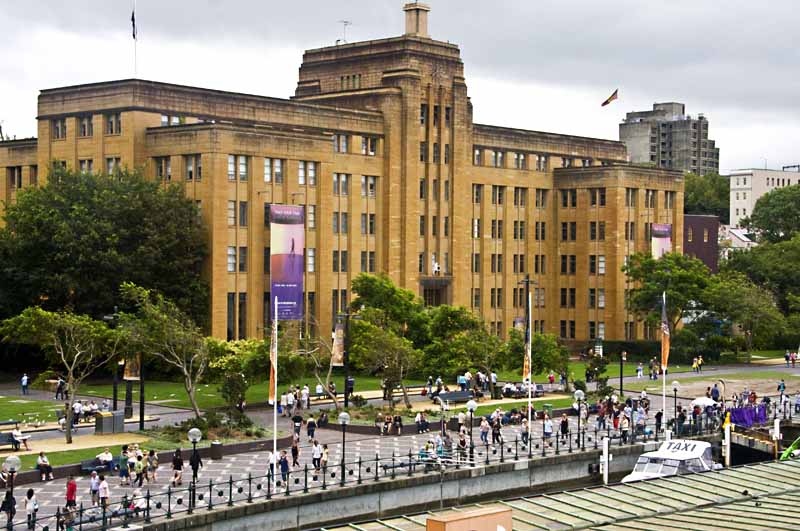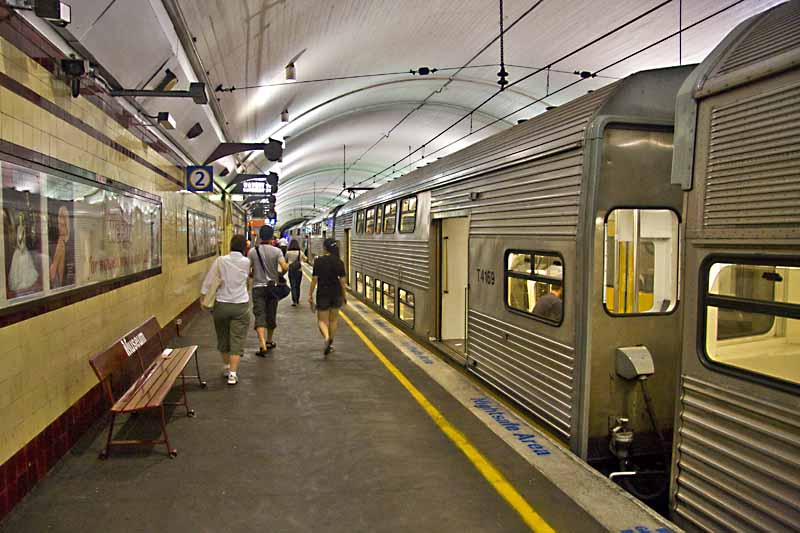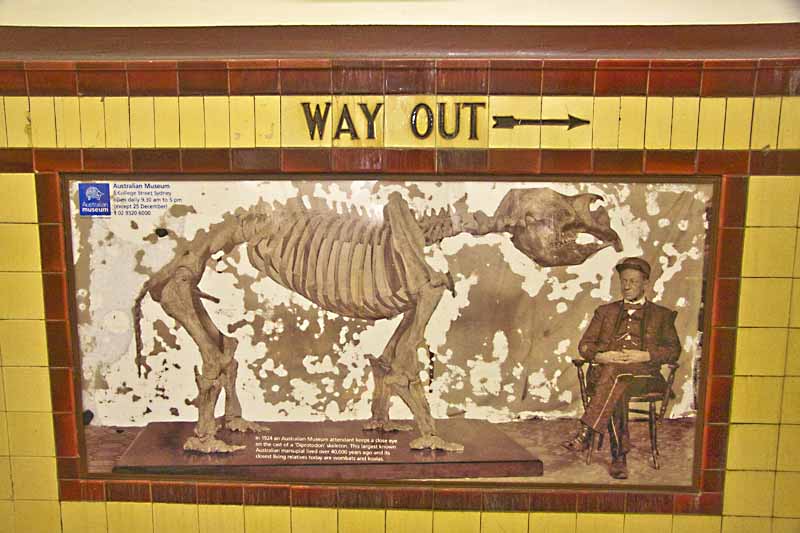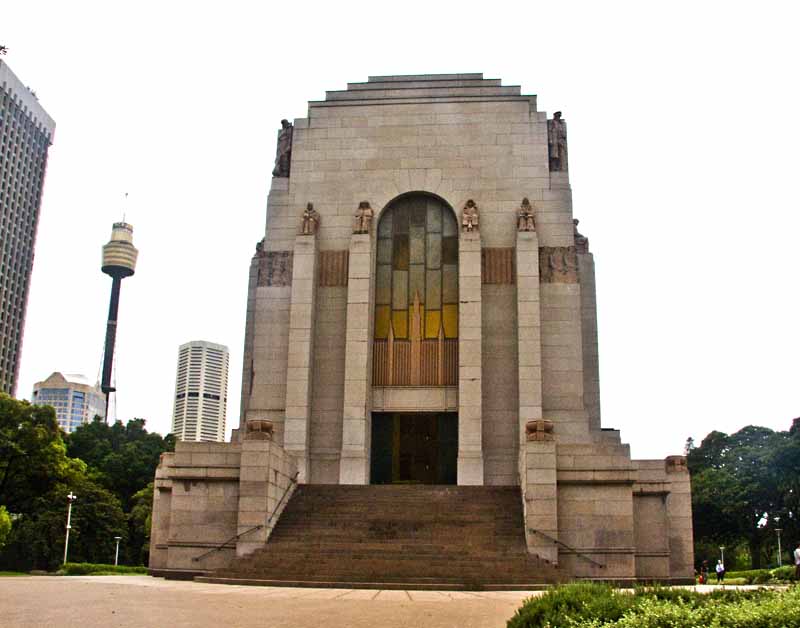A Trip to Australia and New Zealand
Sydney - Circular Quay to the Australian Museum

Sydney is the largest city in Australia and covers a huge area. We were only in town for a week and we had to prioritize what we were going to try to do. Our hotel was just across a narrow street from this huge Museum of Contemporary Art. We were trying to see the essence of quintessential Australasia on this trip and decided that contemporary art, important though it might be, was something that, on this trip at least, we would have to pass on. Every day, when we got on a ferry or a bus or a train we walked right by it. It still bothers me that we did not at least peak inside. The day that I shot this image we were on our way to the Australian Museum to see their aboriginal collection.

The Sydney train system is composed of an underground metro type system in the core of the urban area that connects seemlessly to a suburban system that radiates out from the center. It is heavily used by the public and frequently abused in the press as all trains systems are, but we found it to be an excellent service and used it whenever we could not go where we wanted to on one of the ferries. The first train service in Sydney was in 1855, but its greatest strides toward the system in place today was thanks to John Job Crew Bradfield ( a great name for a public works engineer) who, in 1915, envisioned the electrification of the suburban railways, a city underground railway, and the Sydney Harbor Bridge. The Great Depression and various world wars got in the way of constructing his vision but by the mid 1950s it was pretty much all in place.

Aussies have a great sense of humor - even in public places. This is the exit for the Australian Museum stop.

After exiting the underground train station you pop up into Hyde Park at the center of which is the ANZAC War Memorial. It was originally built as a memorial to the Australian Imperial Force that served during World War I and was inspired by the Australian and New Zealand participation in the Gallipoli Campaign. (More information on this subject in the Auckland, New Zealand section.) It was designed by Charles Bruce Dellit and completed in 1934. It is regarded as one of the finest Art Deco structures in Australia.
